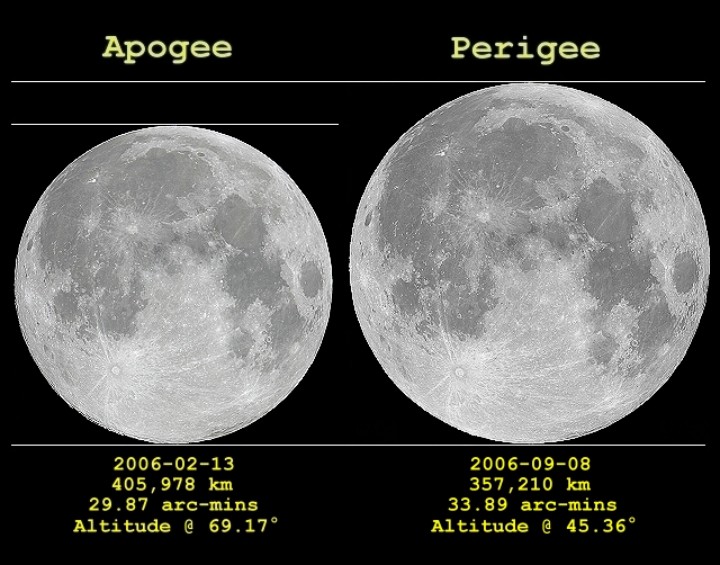
|
Credit & Copyright: Anthony Ayiomamitis
Explanation:
Tonight, those blessed with clear skies can enjoy
a glorious Full Moon,
(exact full phase at 0452 UT, October 26).
In fact, the Moon will
reach its full phase within a few hours of
perigee,
the closest point in its
elliptical orbit,
making it the largest Full Moon of 2007.
On April 3, the Full Moon was within hours of apogee,
the farthest point in the lunar orbit,
corresponding to the smallest Full Moon of 2007.
The difference in apparent size between the largest and smallest Full
Moon is quite dramatic and similar to
this
side by side comparison of the lunar
apogee/perigee
apparitions from 2006.
But seen in the sky many months apart, the change is difficult to notice.
Skygazers should
also enjoy the Moon on Saturday, October 27, as
it encounters the lovely
Pleiades star cluster.
Because the Moon will be so bright, it will be easiest to spot the
Pleiades stars near the Moon with binoculars or a small telescope.
|
January February March April May June July August September October November December |
| ||||||||||||||||||||||||||||||||||||||||||||||||
NASA Web Site Statements, Warnings, and Disclaimers
NASA Official: Jay Norris. Specific rights apply.
A service of: LHEA at NASA / GSFC
& Michigan Tech. U.
Based on Astronomy Picture
Of the Day
Publications with keywords: perigee - apogee - Moon
Publications with words: perigee - apogee - Moon
See also:
- APOD: 2025 August 23 Á Fishing for the Moon
- APOD: 2025 July 20 Á Lunar Nearside
- APOD: 2025 June 28 Á Lunar Farside
- APOD: 2025 June 20 Á Major Lunar Standstill 2024 2025
- APOD: 2025 June 18 Á Space Station Silhouette on the Moon
- APOD: 2025 April 22 Á Terminator Moon: A Moonscape of Shadows
- Moon Near the Edge
